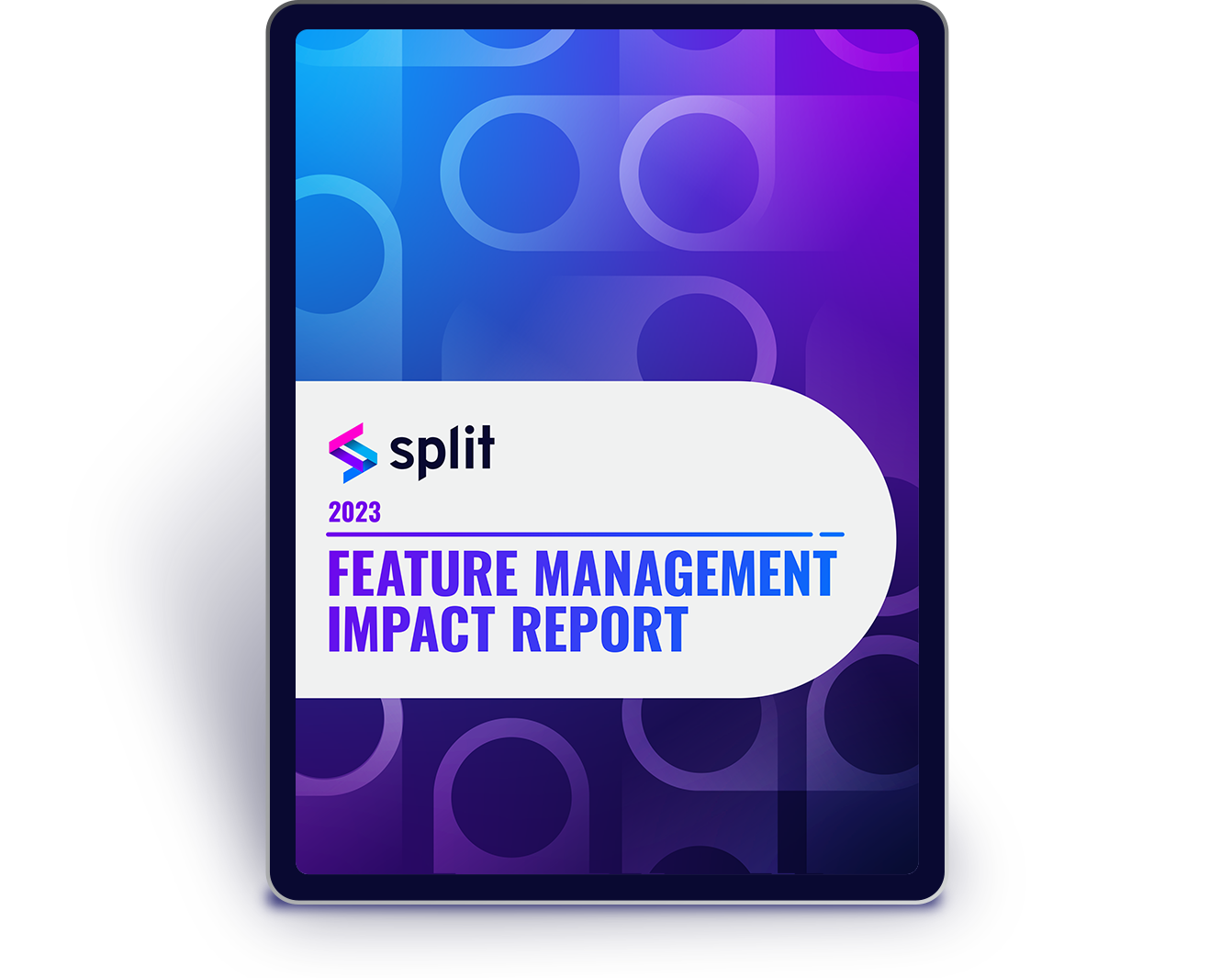Feature Management Impact Report
This report is based on a survey of 353 software professionals, conducted in late 2022. The survey provides useful insights into the state of feature management and experimentation. It highlights a range of maturity levels in two essential areas of software development and releasing. The survey asked respondents for their views on software feature management and experimentation. It also probed their plans for the future.

renderContent(deleteTreatment) {
const allowDelete = deleteTreatment.treatment === "on";
return (
<div className="todoListMain">
<div className="header">
<form onSubmit={this.addItem}>
<input
ref={(a) => (this._inputElement = a)}
placeholder="Enter Task"
></input>
<button type="submit">Add</button>
</form>
</div>
<TodoItems
entries={this.state.items}
allowDelete={allowDelete}
delete={this.deleteItem}
/>
<TodoItems
entries={this.state.items}
allowDelete={allowDelete}
delete={this.deleteItem}
/>
</div>
);
}
Feature Management & Experimentation Adoption and Tools
The state of feature management and experimentation reflects a field in flux. When it comes to actual implementation capabilities, some respondents are already using tools. Most respondents, however, are not there yet. If a high proportion of respondents consider management and experimentation critical to successful digital experiences, why do only about a third actually do it, and about half are looking into it?
Performance Measurements
Survey results show that respondents cannot measure the performance for half or more of their releases.Measuring Business Impact
A mature organization should be able to measure business impact, such as by connecting event data to key performance indicators (KPIs).Technical Debt
Technical debt is relevant to feature management and experimentation because excessive technical debt will slow down a developer team’s ability to innovate and experiment with new features.Performance Issues & Consequences
This is a highly problematic state to be in— where fears of negative repercussions for software changes create hesitation when introducing new features.
Split Is a Leader in Feature Management and Continuous Delivery
About Feature Management & Experimentation
A software feature comes into existence after a careful analysis of user behavior and product management deliberations. As a result, a new class of software development tools has emerged to enable product development teams to track how various features are performing. Tools like feature flags allow developers to assess whether a feature has helped or hindered elements like UX, among other factors.
Feature-Level Measurement & Experimentation
Survey results show that recognizing the importance of experimentation does not necessarily translate into embracing it.Feature Management & Experimentation Capabilities
More than a third of respondents currently have some feature management and experimentation capabilities.Feature Delivery Priorities
Development teams and stakeholders in engineering and product management are under pressure to get features out into production as quickly as possible, but without compromising quality.
Split Series: Away From The Keyboard
What brings Matt Winchester fulfillment in his job is finding new efficiencies. Before Split, it took 20 people to release one feature in one hour. Now it takes one person from Matt’s team just five minutes.
Schedule a Split Demo Tailored to Your Needs
Speed up development cycles, reduce release risk, and focus your team on DevOps best practices that create maximum impact.
Create Impact With Everything You Build
We’re excited to accompany you on your journey as you build faster, release safer, and launch impactful products.
